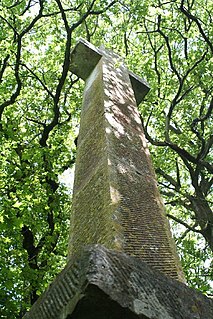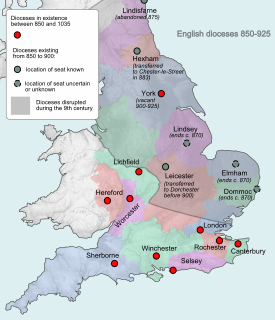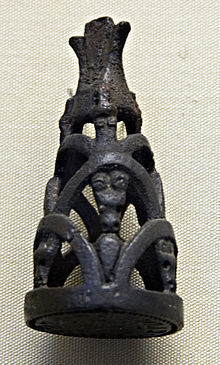Ælfthryth was an English queen, the second or third wife of King Edgar of England. Ælfthryth was the first king's wife known to have been crowned and anointed as Queen of the Kingdom of England. Mother of King Æthelred the Unready, she was a powerful political figure. She was possibly linked to the murder of her stepson King Edward the Martyr and appeared as a stereotypical bad queen and evil stepmother in many medieval histories.

The Bishop of Norwich is the ordinary of the Church of England Diocese of Norwich in the Province of Canterbury. The diocese covers most of the county of Norfolk and part of Suffolk. The current Bishop of Norwich is Graham James, who signs as +Graham Norvic.
This article describes the history of Suffolk, the English county.
Æthelwold of Lindisfarne was Bishop of Lindisfarne from 721 until 740.
Æthelwold was a common Anglo Saxon name. It may refer to:

Saint Æthelwold of Farne was a late 7th century hermit who lived on Inner Farne, off the coast of the English county of Northumberland.
Æthelstan Half-King was an important and influential Ealdorman of East Anglia who interacted with five kings of England, including his adopted son Edgar the Peaceful. Many of Æthelstan's close relatives were also involved in important affairs, but soon after the death of king Eadred in 955, he left his position and became a monk at Glastonbury Abbey.
Dunwich was a parliamentary borough in Suffolk, one of the most notorious of all the rotten boroughs. It elected two Members of Parliament (MPs) to the House of Commons from 1298 until 1832, when the constituency was abolished by the Great Reform Act.
Æthelwold was a medieval Bishop of Lichfield.
Humbertus was a medieval Bishop of Elmham.
Ascwulf was a medieval Bishop of Dunwich. He was bishop in the 8th century, but it is not known exactly when he was consecrated or his date of death.
Ecglaf was a medieval Bishop of Dunwich.
Æthelwald was Bishop of Dorchester.
Æthelwine was ealdorman of East Anglia and one of the leading noblemen in the kingdom of England in the later 10th century. As with his kinsmen, the principal source for his life is Byrhtferth's life of Oswald of Worcester. Æthelwine founded Ramsey Abbey in 969, and Byrhtferth and Ramsey Abbey remembered him as Dei amicus, but the monks of nearby Ely saw him as an enemy who had seized their lands.

Æthelwald was ealdorman of East Anglia. He is mentioned in Byrhtferth's life of Oswald of Worcester along with other members of his family.
Gyrwas was the name of an Anglo-Saxon population of the Fens, divided into northern and southern groups and recorded in the Tribal Hidage; related to the name of Jarrow.

Dunwich is a village and civil parish in Suffolk, England. It is in the Suffolk Coast and Heaths AONB around 92 miles (148 km) north-east of London, 9 miles (14 km) south of Southwold and 7 miles (11 km) north of Leiston, on the North Sea coast.





